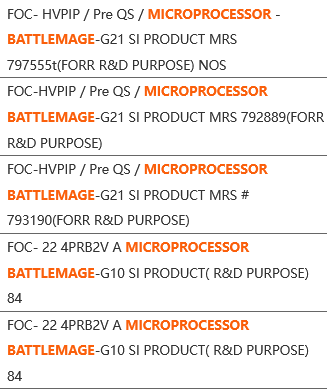Just as Intel said, it is indeed working on its next-generation discrete graphics processors codenamedBattlemage(and we already know itfrom the horse’s mouth). Based on excerpts from shipping manifests published by@momomo_us, the company is working on at least two graphics processing units.
The excerpts from shipping manifests reveal that Intel is working on both Battlemage G10 and Battlemage G21 discrete GPUs. Intel’s current lineup of graphics processors includes ACM-G11 (entry-level) and ACM-G10 (midrange in terms of market positioning, higher-end in terms of silicon) graphics processors. Based on the existing nomenclature ofIntel’s Arc graphicsprocessors, Battlemage-G10 will thus be the bigger silicon, with Battlemage-G21 as the smaller chip aimed at entry-level systems. Assuming that both offer decent performance levels, they may well end up in our list of thebest graphics cards.

Based on the shipping manifest, both the Battlemage-G10 and the Battlemage-G21 are shipped for R&D purposes (which is pretty much what one would expect for these devices at this point). Meanwhile, the G21 GPU exists in the pre-qualification (pre-QS) phase of silicon, but there is no mention of the G10’s status.
Pre-qualification silicon is used to validate the functionality and reliability of a chip and assess performance levels. Pre-QS silicon is typically not qualified for mass production. Yet if the silicon device is functioning and meets performance, power, and yield criteria, it may well be mass-produced. For example, AMD’s Navi 31 GPU is mass-produced in its A0 silicon phase, which assumes that it met the targets set by the developer.

We frequently report on Nvidia’s progress, most recently with theGeForce RTX 50-series graphics processorsthat promise to end up in ourbest graphics cards listbased on industry leaks, but we rarely get to report on Intel’s progress with its next-generation graphics cards. Today we had an opportunity to do so.
While Nvidia seems to have a clean sweep on the discrete GPU market for laptops in this generation, Battlemage — given Intel’s relationships with PC makers and OEMs — could pose some serious competition to the green team in the next round. What happens on the desktop discrete GPU market is about to be seen, but the shipment manifest indicates that we are going to have quite a battle there with AMD’s RDNA 4, Intel’s Battlemage, and Nvidia’s Blackwell.

Get Tom’s Hardware’s best news and in-depth reviews, straight to your inbox.
Anton Shilov is a contributing writer at Tom’s Hardware. Over the past couple of decades, he has covered everything from CPUs and GPUs to supercomputers and from modern process technologies and latest fab tools to high-tech industry trends.